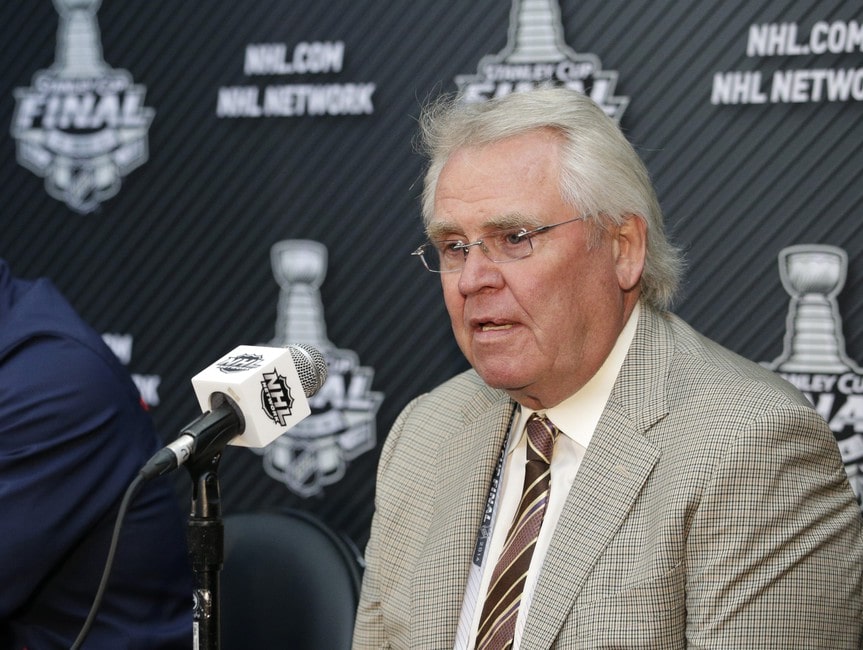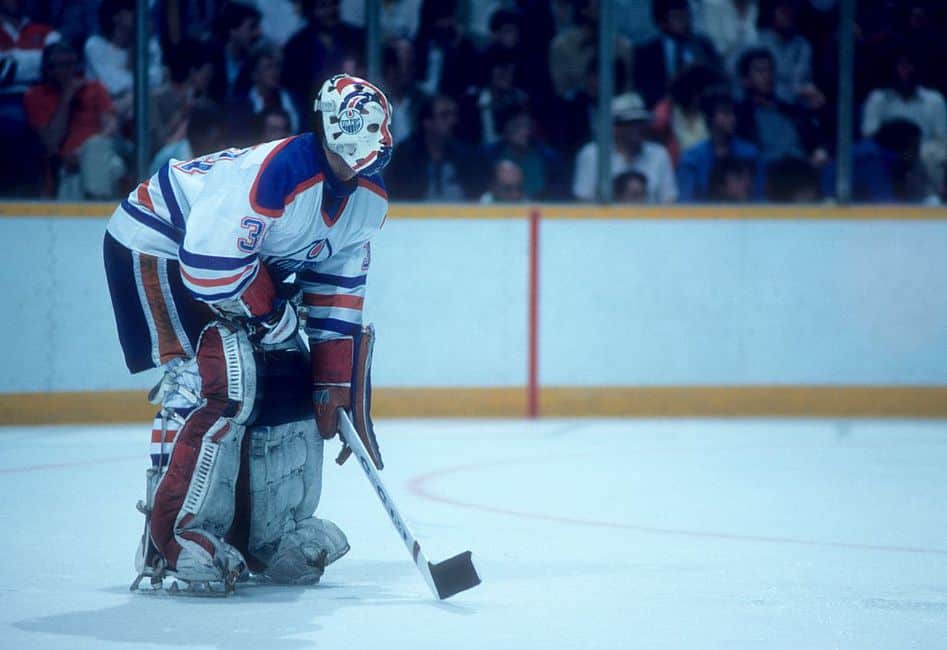In the midst of the NHL’s busiest time of year, on June 26, Glen Sather announced his retirement from hockey, stepping away from his executive role with the New York Rangers.

It was easy to overlook Sather’s announcement, which came between Game 7 of the Stanley Cup Final on June 24, and the NHL Awards on June 27, the NHL Draft on June 28 and 29, as well as the start of free agency on July 1. Now that things have quieted down quite a bit, there is an opportunity to take stock of Sather’s legacy. Specifically, his legacy in Edmonton.
Anyone under age 30 will only have known Sather for his time in New York. He had been with the Rangers since June 1, 2000, when he was named president and general manager. His tenure as Rangers GM lasted 14 seasons, and he held the position of president until 2019 when he moved into his latest role of senior advisor to the owner and alternate governor.
But Sather had already spent over three decades in the NHL before joining the Rangers front office. The native of High River, Alberta, came into the NHL as a forward with the Boston Bruins in 1966. He went on to play with the Pittsburgh Penguins, Rangers, St. Louis Blues, Montreal Canadiens and Minnesota North Stars. And then he returned to Alberta.
Sather Joined the Oilers in the WHA
The Edmonton Oilers were still in the World Hockey Association (WHA) when Sather joined them in 1976-77 for what would be his final campaign as a player. With 18 games remaining in the regular season, Sather was named player-coach. He then hung up the skates and became a full-time head coach for the 1977-78 season.
Related: The 1979 NHL – WHA Merger
In 1978-79, Sather coached Edmonton to its first appearance in the Avco Cup Final, the WHA championship series, where the Oilers lost to the Winnipeg Jets. Following the season, the WHA merged with the NHL.
After Edmonton’s inaugural NHL campaign, 1979-80, Sather was promoted to the role of president and general manager. He then hired Bryan Watson to be his replacement as head coach. But the Oilers got off to a rocky start in 1980-81, going 4-9-5 under Watson. So after 18 games, Sather fired Watson and re-installed himself behind the bench.
Now Sather was wearing three hats, president, GM, and head coach. And before long, he would be wearing an even greater number of rings.
Sather Was ‘Perfect Father Figure’ for Oilers
With Sather behind the bench, the Oilers won the Stanley Cup in 1984, 1985, 1987 and 1988. They also reached the Stanley Cup Final in 1983. Edmonton’s roster over this time included six future Hall-of-Famers who were part of those four Cup victories (Glenn Anderson, Grant Fuhr, Wayne Gretzky, Jari Kurri, Kevin Lowe, Mark Messier) and another who was around for the first three (Paul Coffey).
With such a lineup at his disposal, many will suggest Sather had the easiest job in hockey. But there’s an art in taking a group of superstars, all in their early 20s, and marching them together toward the ultimate achievement. Then doing it again. And again. And again.
As Sportsnet’s Mark Spector wrote, Sather was “the perfect father figure for an Oilers team that required equal parts guidance and free reign.”

“He gave us a lot of rope, so that we could learn on our own, but he also knew when to yank on the rope to reel us back in,” Fuhr said in Spector’s book, The Battle of Alberta. “So he let us grow, thinking it was our idea.”
In 1989, one year after Gretzky was traded to the Los Angeles Kings, Sather stepped down as head coach to focus solely on his front office duties. Longtime Sather assistant, John Muckler, took over and coached the Oilers to their fifth championship in 1990.
After more than a decade of dominance, the Oilers would tumble down the standings in the early 90s, leading Sather to undertake a massive rebuild.
He had one final stint as head coach, in 1993-94, once again stepping behind the bench after the Oilers got off to a tough start, this time to replace Ted Green. Sather took over a young team that began the season 3-18-3 and coaxed them to a greatly improved 22-27-11 record over the final 60 games of the campaign.
Sather Rebuilt the Oilers in the 1990s
In Sather’s final eight seasons as president and general manager, 1992-93 through 1999-00, the Oilers made the playoffs just four times and only won two postseason series. But that doesn’t tell the story of how Sather steered the club through the most volatile period in franchise history, and made the team competitive at a time when nearly every factor worked against that.
In the 90s, when there was no salary cap and the loonie bottomed out at around 70 cents against the American Dollar, small-market Canadian teams struggled to stay afloat. The Quebec Nordiques and Jets both relocated to U.S. markets, and the Oilers almost moved south, too.
But with a budget dwarfed by those of most teams, Sather got the Oilers back into perennial playoff contention. While his draft record was never great, he had a pair of can’t-miss picks in Jason Arnott (No. 7 overall in 1993) and Ryan Smyth (No. 6 overall in 1994), two future All-Stars that would prove pivotal to Edmonton’s revival. The rest of the work was done through shrewd trades, dealing for the likes of Curtis Joseph, Mike Grier, Bill Guerin, Roman Hamrlik, Todd Marchant, Ethan Moreau, Janne Niinimaa, Tommy Salo, Jason Smith and Doug Weight.
On Dec. 11, 2015, a decade and a half after he departed Edmonton, the Oilers raised a banner in Sather’s honour. It now hangs in Rogers Place, alongside banners for Anderson, Coffey, Fuhr, Gretzky, Kurri, Lowe, Messier, Al Hamilton and Rod Phillips. His name belongs in that company. And looking back on the occasion of Sather’s retirement, we’re reminded why he’s one of the most significant figures in Oilers history.
